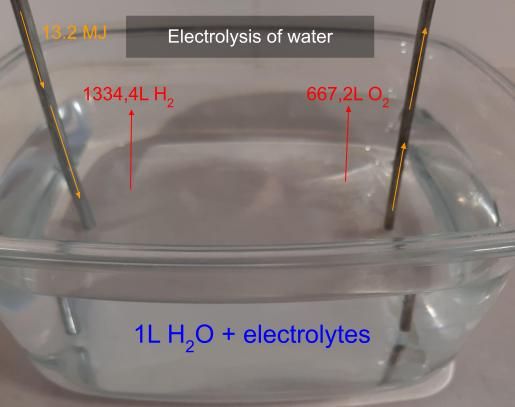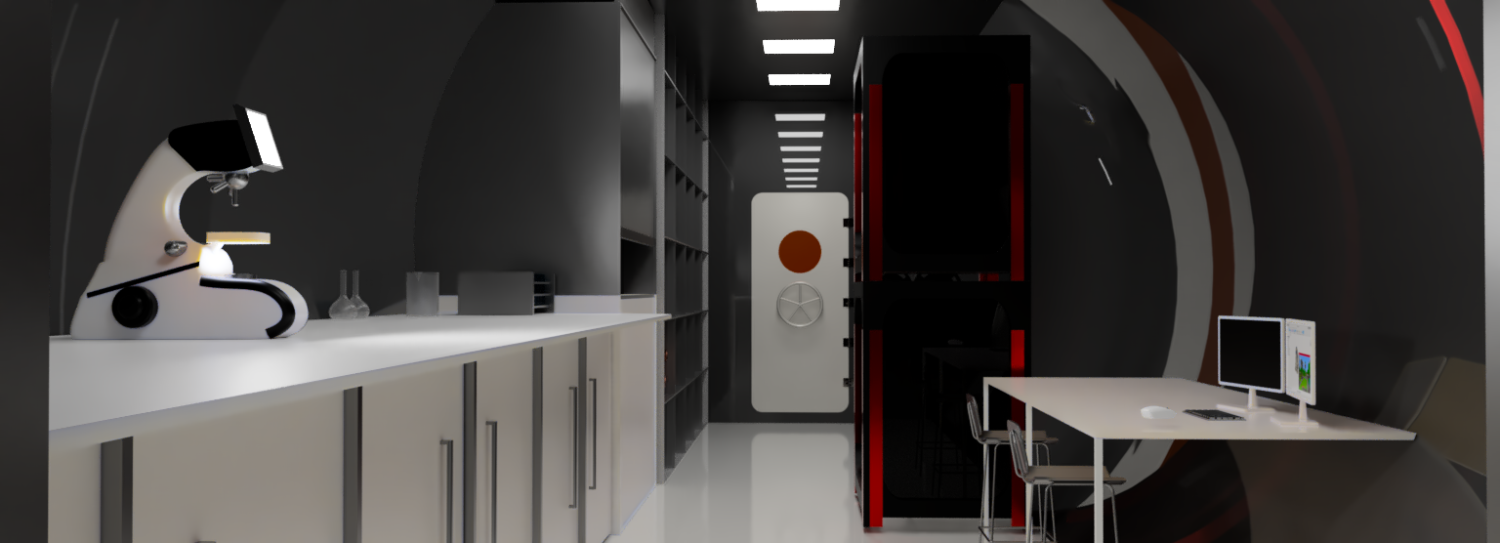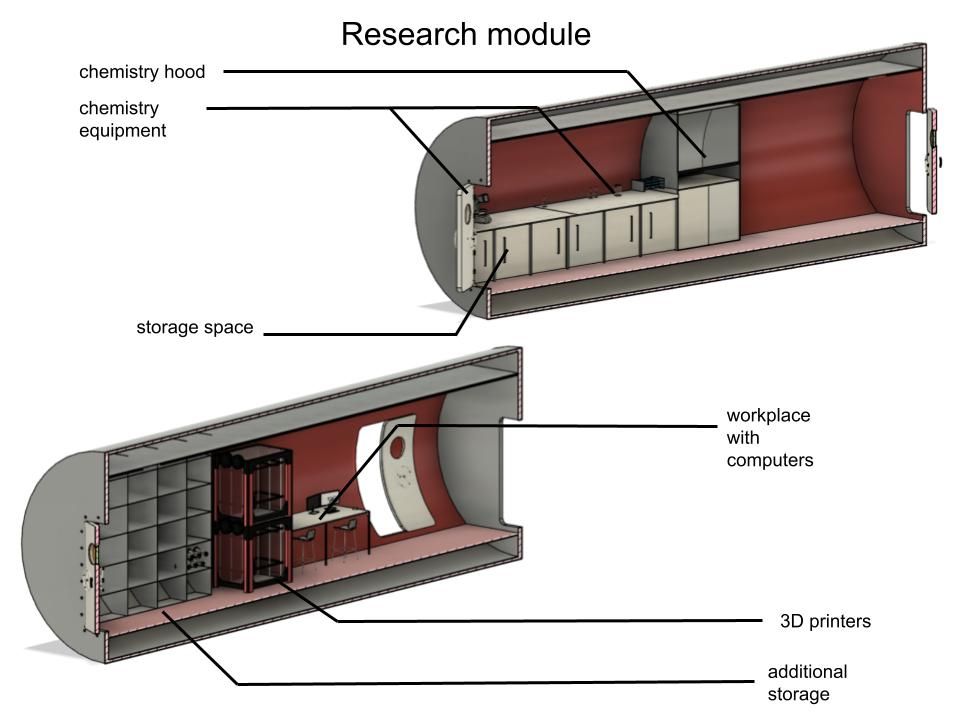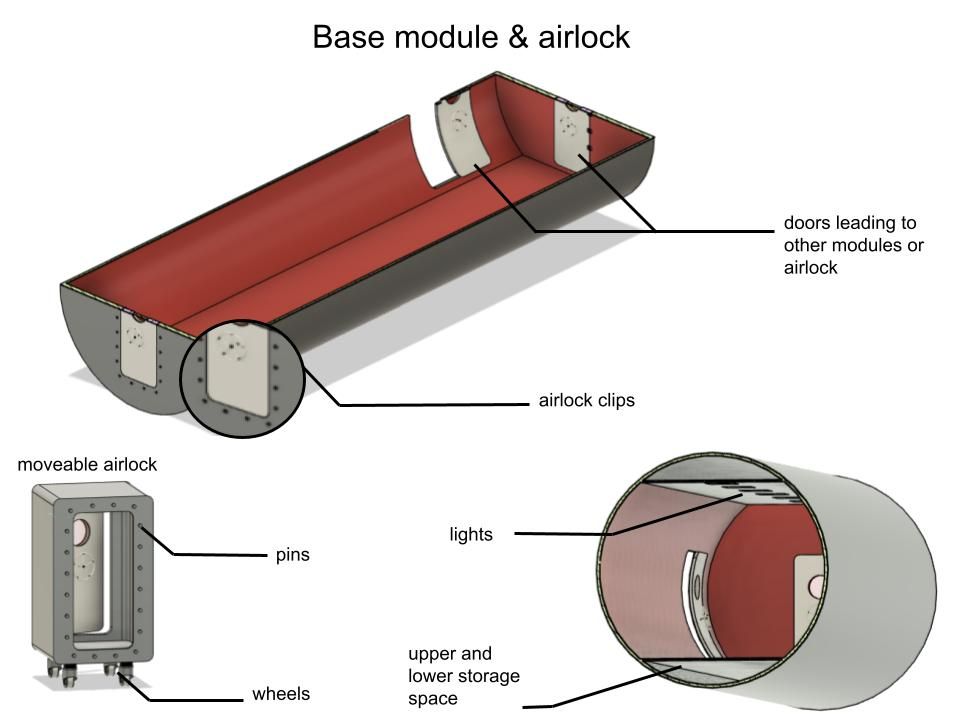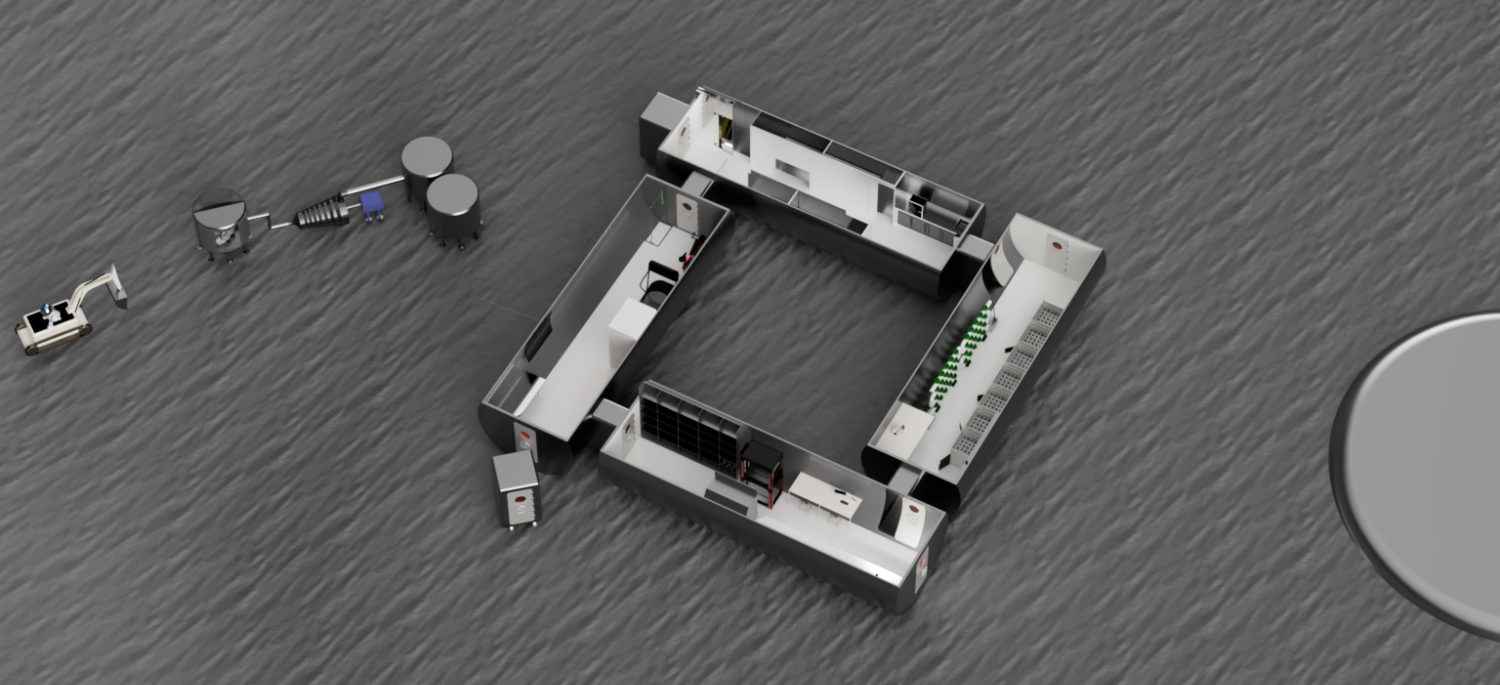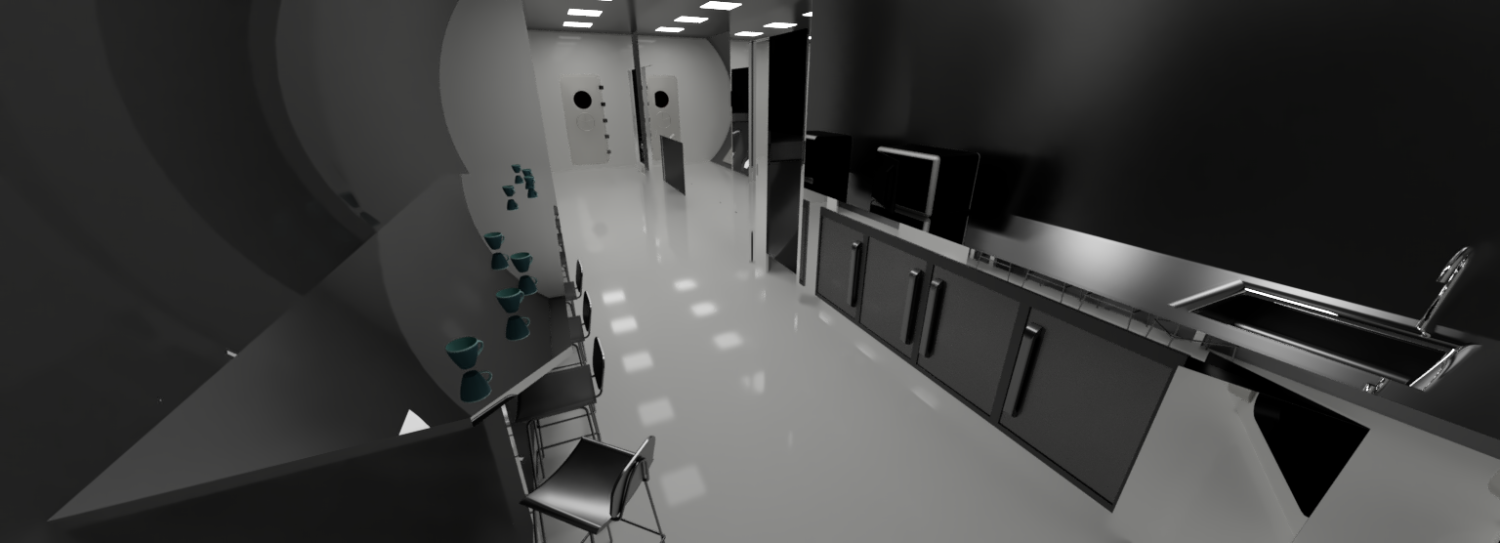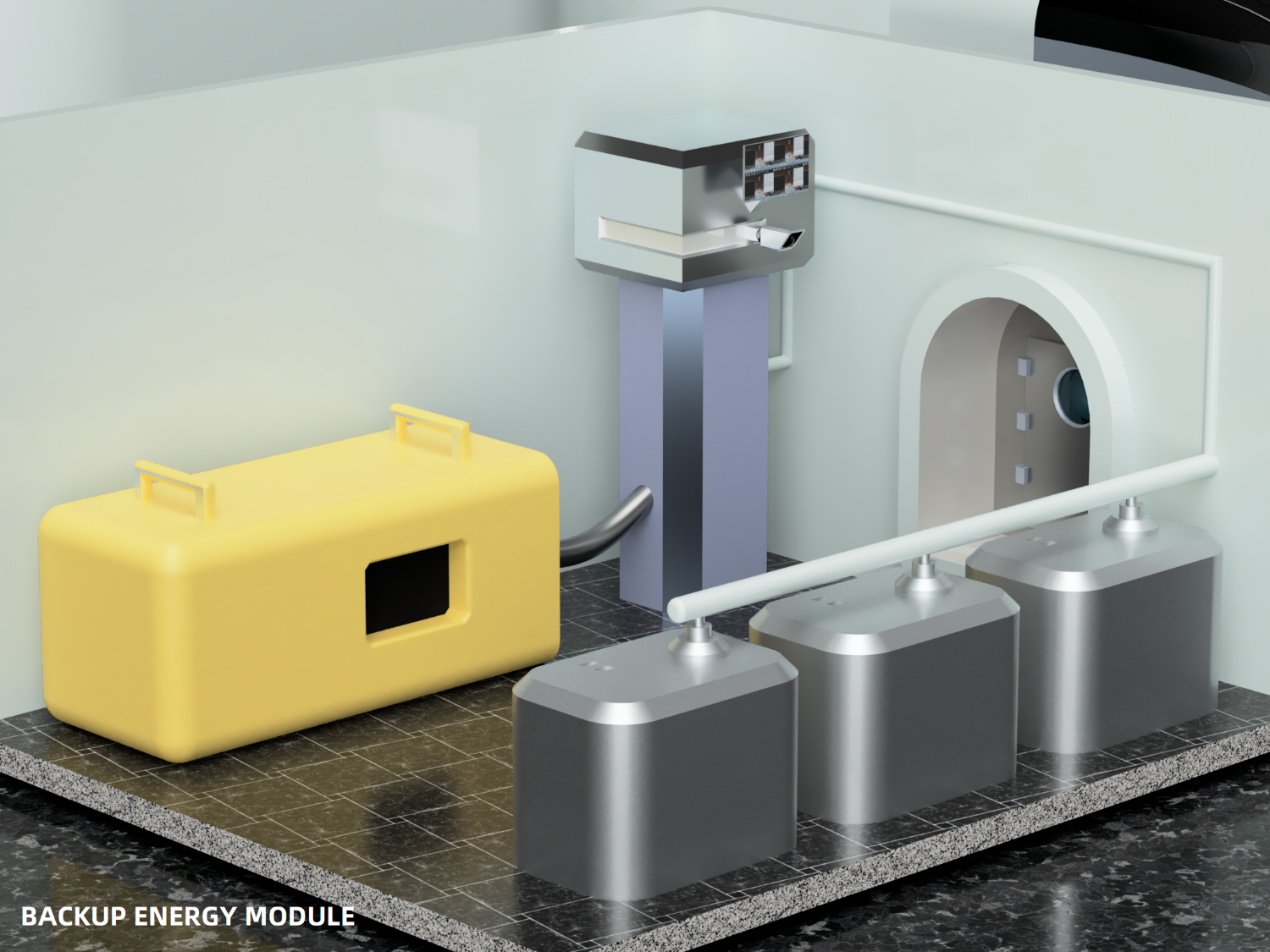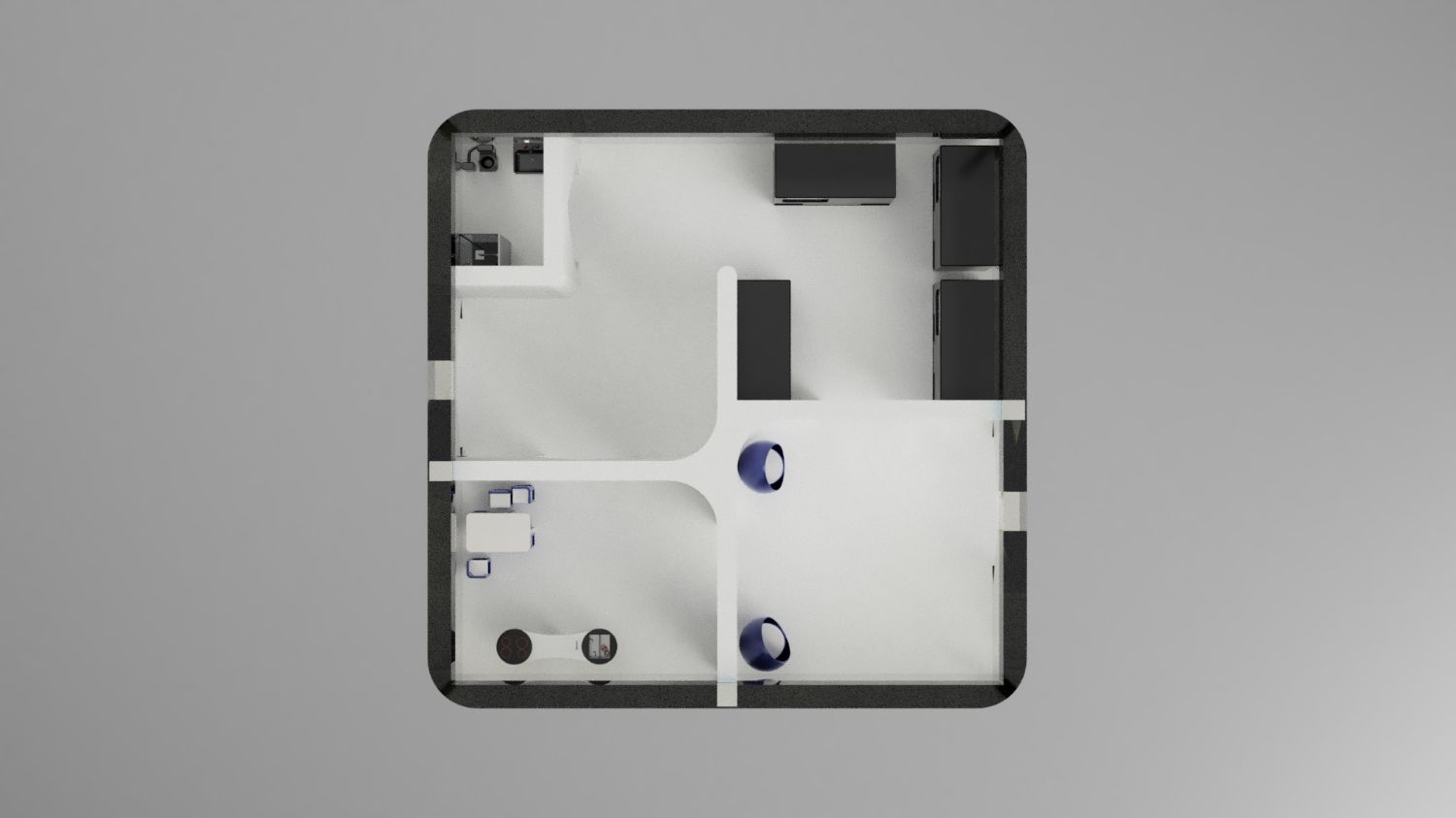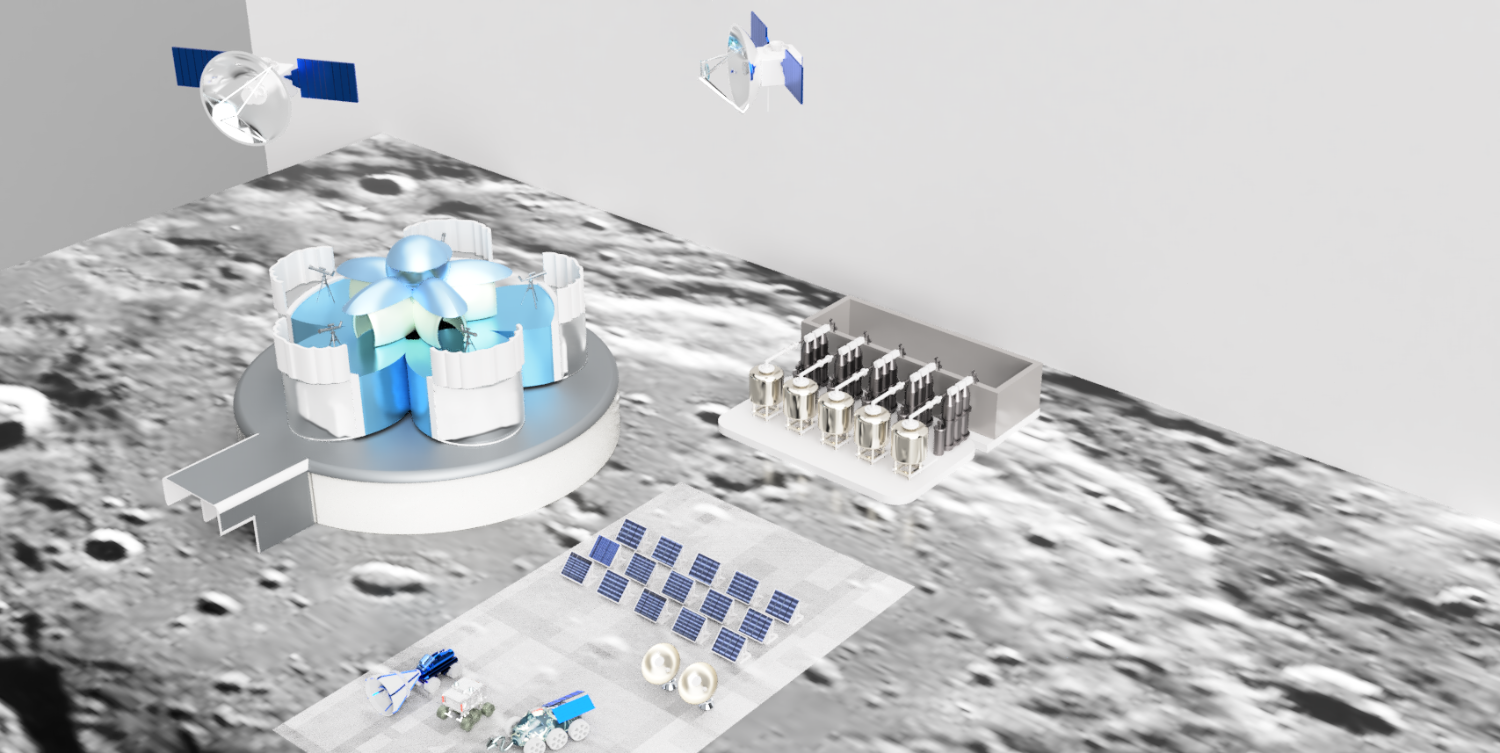Moon Camp Pioneers Gallery 2021-2022
In Moon Camp Pioneers each team’s mission is to 3D design a complete Moon Camp using Fusion 360. They also have to explain how they will use local resources, protect astronauts from the dangerous of space and describe the living and working facilities.
Team: Moon Croissant
Lycée Joffre Montpellier France 16, 15 4 / 0
External viewer for 3d project
|
Project description
Our base Cartier I attempts to present an accurate model for a realistic lunar settlement. The first step in our approach to this challenge was to list all problems that would have to be solved. We found the following: construction, location, vital needs (food, water, air), energy, safety (radiation, heat, health deficiencies), and utility. What makes our solution stand out is the high extensibility, ease of installation, and autonomy that Cartier I would have. The first expedition would be led by four astronauts, who would bring all the building resources with them.
We have created a CAD model schematizing the basic outline of our moon camp; it consists of the four habitable modules and most external infrastructures (water extraction/storage and energy production) that Cartier I would have during the 1st expedition. Schematics below explain in detail the configuration of the base and all individual modules, as well as the water and electricity generation systems. |
|||
|
2.1 Where do you want to build your Moon Camp?
We have decided to place the settlement directly at the bottom of a crater, whose walls would serve as an effective sun shield (this also eliminates the challenge of transporting ice). As for the choice of the crater, many criteria must be matched: perpetual shadow at the bottom, strong and frequent illumination on the rim, and good concentrations of water ice. Other advantages could include the size of the crater (influences traveling time), its proximity to other sites of interest, and its orientation towards potentially uncharted regions of space. According to data from the Chandrayaan-1 expedition, water is most present around the moon’s poles, which is therefore where our base is most likely to be. A lack of precise data for specific craters prevents us from giving a definitive answer, but potential candidates include Shackleton crater (with peaks illuminated for ~94% of the year), Whipple crater (with a thick ice layer predicted), or Peary crater (which is quite shallow). 2.2 How do you plan to build your Moon Camp? Describe the techniques, materials and your design choices.
We plan to use the rocket’s hull as the main skeleton of the base. Once the rocket reaches moon orbit, it will disassemble into four sections that land independently. These four cylindrical sections will constitute the four living modules that astronauts will need for this first expedition: a living module, a communal (& sports) module, a greenhouse module, and a research module (see schematics below). Since heat influx from radiation can be ignored, the only thermal insulation needed is for heat loss due to radiation (from the base – towards the outside) and conduction through the ground. This can be done by using multi-layer insulation – with Kapton or Mylar – to bounce back radiation and by thickening the part of the hull in contact with the ground. Inflatable modules are also conceivable, provided that their base in contact with the ground is also made of thick insulating material. Using the rocket’s frame will drastically reduce construction time, as the only construction needed will be for connections between the modules, exterior infrastructures, and interior furniture. The infrastructures will be assembled from small or medium-sized parts constructed on Earth; the low gravity will make it easier to carry the larger parts. Shortly after arriving, the team will travel to the outside of the crater in order to install solar deflectors and the communication antenna. This will be one of the only times they would need to travel large distances (other than for occasional maintenance), as the camp is otherwise compact. 2.3 The environment on the Moon is very dangerous for the astronauts. Explain how your Moon Camp will protect them. (maximum 150 words)
The dangers that the astronauts could be exposed to can be classified into three categories. First, environmental issues: as explained previously, the usually harmful radiation from space will never reach the astronauts at the bottom of the crater, so this problem can be eliminated. Meteorites, on the other hand, could potentially reach the camp; however, quick calculations (comparing with the amount that reaches the Earth’s atmosphere) show that the likelihood of a meteorite damaging a module or an astronaut is negligible. Second, health deficiencies: the astronauts will only experience a sixth of the Earth’s gravity, which will result in muscle loss. To counter this, astronauts will go through a daily workout routine with machines adapted to work in low gravity (elastics to pull the person down, magnetic resistance, etc). Third, technical problems or accidents. All modules are sealed by airtight doors and will not be affected if one breaks; parameters like temperature or air composition will be constantly monitored to prevent accidents. |
|||
|
2.4 Explain how your Moon Camp will provide the astronauts with:
|
Water
|
Food
|
Power
|
Air
|
|
During the settling phase, astronauts will rely on a small water supply brought from Earth. Once they have installed the main infrastructures, the water will be extracted from regolith in a 3 step process. |
Food will be produced in the greenhouse module (see schematics below). |
During the settling phase, the base will be powered by a radioisotope thermoelectric generator, which will be disposed of at a safe distance from the base once it is no longer needed. |
When it comes to breathing, there are two essential processes that must be carried out: creating O2 and scrubbing CO2. The nitrogen (80% of air) needed can be brought from Earth and won’t get consumed as it is an inert gas. |
|
2.5 Explain what would be the main purpose of your Moon Camp.
First and foremost, Cartier I’s purpose will be a scientific one. The camp will allow astronauts to conduct experiments and research that couldn’t be done on Earth, such as the behavior of various objects in low gravity or in the void. This will also be a golden opportunity to analyze in depth the composition of regolith in lunar craters. The camp will also have an importance in the field of astrophysics: its vantage point will allow astronauts to observe stars that can’t be seen from earth. Our moon camp will also serve as a waypoint for space colonization. Indeed, spaceships will be able to refuel with the hydrogen gas created from electrolysis, which could for example facilitate a trip to Mars. In a potential future, the base could also have a more lucrative goal, such as selling rare-earth elements that can be easily found on the moon, or by developing space tourism. |
|||
|
3.1 Describe a day on the Moon for your Moon Camp astronaut crew.
The astronauts wake up at 7:00 and have half an hour to dedicate to their hygiene and personal interests. At 7:30, the crew shares a breakfast in the Living Module, where they eat both products produced on the moon and products brought from earth to keep a balanced diet. A group of two astronauts then supervise the rover as it extracts regolith (to later extract its water) while the remaining two astronauts take care of the garden installed in the greenhouse module and monitor the growth of the artificial meat. At 9:00, two of the astronauts leave the base for maintenance of the rovers and infrastructures. This can consist of multiple tasks like cleaning some of the instruments, verifying the productivity of the generators or checking the integrity of the piping system. The other two astronauts stay in the base to do some chores to guarantee the well-being of the crew. At 10:30, All of the astronauts regroup in the communal module to do some exercises as the low gravity on the moon’s surface can weaken their muscles. After an hour of training and thirty minutes of resting, they have lunch and can enjoy the food that they produced in the base. At 13:00, the crew goes outside of the camp to observe the stars, which are clearly visible thanks to the absence of light pollution. The observation will then be sent to Earth where scientists can analyze them in more depth. During the rest of the “afternoon”, the astronauts collect samples of regolith and analyze their composition in the research module, to verify parameters like water concentration and conduct various other experiments. These results are also sent to Earth at around 18:30, after which astronauts get some free time to rest. At 19:00, the crew regroups in the living Module and prepares the next day’s schedule. They then have dinner at 20:00 and have an hour for leisure, during which they usually play cards, listen to great music or read books. This leisure time is essential to ensure their mental well-being and decrease the stress that accumulates when living in space. The rest of the evening is then dedicated to hygiene and exchanging with earth. The astronauts go to bed at around 22:30 to get a full night of sleep, dreaming about the immensity of space and the possibilities that tomorrow holds. |
|||


